In this issue
Features
A slice of Australia’s horticultural history
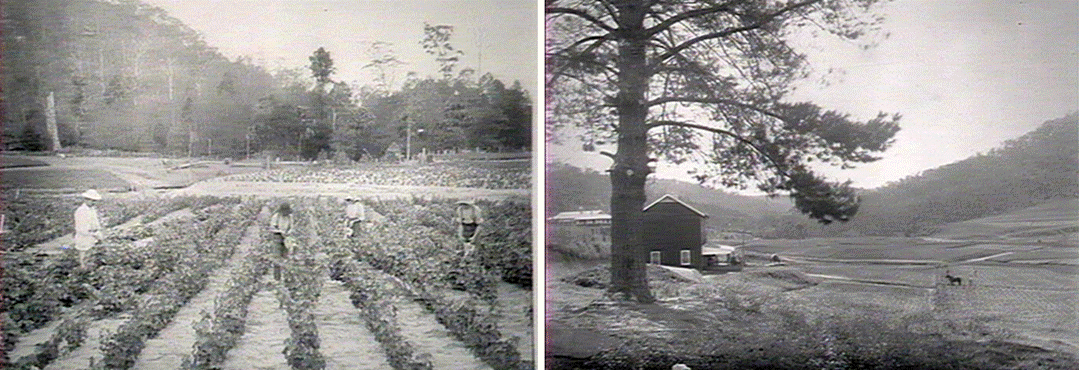
-Lorraine Hawdon
A recent historical display highlighted the former Gosford Horticultural Research Station’s fascinating connections to the early days of the Australian wine Industry and development of Pecan Nuts in Australia.
Narara Ecovillage is built on the former Gosford Horticultural Research Station, which relocated its Narara operations in 2011 after a century of research into grapes, pecans, citrus, green tea and much more.
Many former employees have visited the village since the village co-op bought the land 10 years ago. One notable example was horticulturist and media personality Angus Stewart, who developed Kangaroo Paw varieties suitable for Eastern Australia, and along with Tino Carnevale was a star guest at the Network’s Mad About Dirt festival 4 years ago.

The Grafting Shed

The village’s resident historian, Kate, has been collecting items from the Research days – many were left behind in buildings that have since been demolished. For our 10th Anniversary, Kate created an illuminating display in the Grafting Shed, a heritage building on the village’s main road.

The top floor of the Grafting Shed is currently used as a craft space, where villagers regularly meet up to share companionship and insider knowledge in knitting, sewing and various crafts.
Grapes
The Narara Viticulture Nursery operated between 1912 to 1950. It was originally set up to develop Phylloxera-resistant varieties of grapes, to combat the Phylloxera aphid affecting the nascent industry in NSW and Victoria.
The Grafting Shed was built in 1917-1918, replacing an earlier building that had been damaged by fire. Originally used to graft varieties of Grape vines to trial for the Viticulture industry, it has had various uses over the years, including as a manager’s residence, and later as office space and for storage.
Pecans
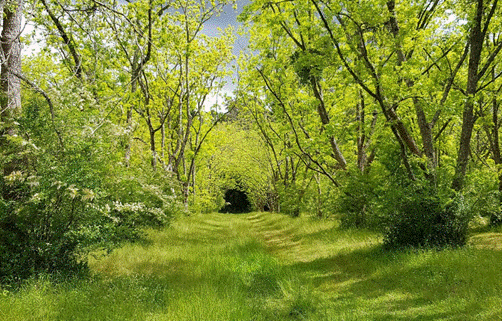
Pecan Nut varieties were introduced early on, with Narara possibly the first site they were planted in Australia. We have some of these original varieties growing throughout the village, including one opposite the Grafting Shed, along the Eastern boundary of the floodplain, and in a dedicated orchard at the north end of the floodplain. This orchard plays host to large flocks of Cockatoos when the nuts are ripe.
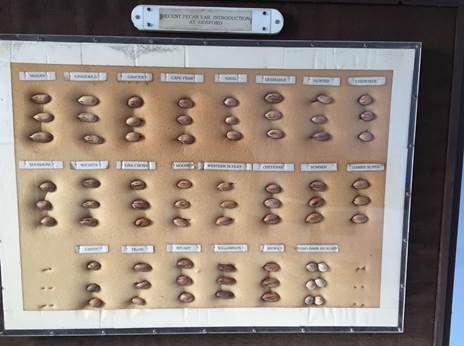
Healthy Homes FINAL – Internal air quality
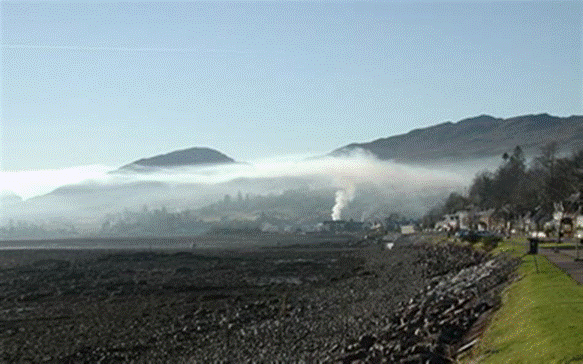
– Mikala Dind
Diesel, woodsmoke, pollen, mould, carpets, new paint, gas appliances: the sources of indoor pollution are many and varied. In the final part of this series about healthy homes, I look at indoor air quality. I point to a range of sources for unhealthy particulates and gases, and explain what you can do to breathe more easily in your home.
The quality of internal air in a home will have an impact on the health of those spending time in it, though some will be impacted more than others. There are always multiple reasons behind why some people are more susceptible or resilient to health challenges, such as genetics or lifestyle (diet/exercise, etc).
While the reasons for poor air quality (both internal and external) are varied, they will generally be either particulates or gases.
Particulates
According to NSW Health “there is currently no evidence of a threshold below which exposure to particulate matter (“PM”) does not cause any health effects” and the article goes on to identify various health impacts of both large (PM10) and small (PM2.5) particulates (Reference: NSW Health). PM10 refers to particles that are 10 microns across. These can enter the nose and lungs, causing respiratory and cardiac issues. PM2.5 are so small that they can enter not only deep into the lungs, but also the bloodstream.
Diesel emissions, in particular, have been shown to create or aggravate existing lung and heart conditions and inhaling such particulates needs to be minimised (see NSW EPA background paper for more about Diesel emissions)
Knowing the direction of the prevailing winds in your area will help you to figure out what sources of particulates may be headed in your direction. I had a client who wanted me to assess a home she was seriously thinking about purchasing. Her major concern? Would the smoke from neighbouring chimneys come in through her windows (as this makes it difficult for her to breathe)? Fortunately for them the prospective home was on a hill, which has less chance of being impacted by neighbouring wood smoke than a home in a valley where smoke can get trapped on a still night (particularly due to temperature inversion).
Other sources of particulates include major roads, industrial areas, coal mining/freight trains with coal carriages, quarries, burn-offs/bush fires, and even property development/renovations.
If a building has a ducted air conditioning system that takes in fresh air (eg a commercial system), it is important to know where that fresh air inlet is. If the inlet is on the roof, say, near the exhaust for a neighbouring restaurant, the quality of the air being drawn in could be poor. Filters on such systems can remove larger particulates, however, a filter to remove PM2.5 is more expensive to install and maintain, so are often not used in commercial situations.
Likewise, with a domestic air conditioning system, ensure that the filters are maintained regularly so that the system can work efficiently and effectively.
If gardens are planted against the home (particularly on the southern side), these can be sources of mould spores (from the usually moist much/leaf litter that is continuously breaking down). An open window above such a garden will draw mould spores (and mould-produced gases) into the home, which can become an irritant to the occupants.
Those who suffer from hay fever will benefit from not growing flowering plants (particularly any that they have a specific sensitivity to) around their home. However, also ensure your neighbour is not growing daisies on the other side of your fence.
While watching an open fire can be mesmerising, having one inside the home will introduce an abundance of particulates into the internal air space, potentially causing eye and respiratory irritation. Having an enclosed fire is a much healthier option for the occupants of a home.

Particulates not only refers to solid particles, but also liquids suspended in air (such as pesticides and other air-borne toxins). Thus pesticides sprayed anywhere around the home (including the neighbour’s and any other sources such as golf courses, turf farms, agricultural and council spraying).
Not only can poorly maintained carpets be a home for dust mites and mould, but they can contain debris, pesticides, pet dander, faecal matter and other toxins that have been walked into the home over time. Where possible remove old, soiled carpet. Bare floors are much easier to keep clean than carpeted flooring. However, if your preference is for carpet, ensure it gets vacuumed weekly and any water damage/fluid spills are completely dried within 24 hours.
Gases
I’ve mentioned in an earlier article about the noxious gases that some moulds release (called mycotoxins) which can seep up through floorboards and through the tiniest of gaps around the home.
Other sources of noxious gases include new paint, curtains, carpet and furniture that off-gasses for up to several years after manufacture. Even new clothes, sheets etc can off-gas and need to be washed before use. Ever put dry cleaned clothes straight into the wardrobe and then noticed a really strong odour when you next open the wardrobe door? That’s the dry cleaning chemicals being released. Thus hang the clothes out of the wardrobe for a few days to get rid of those gases.
A big no-no for heating is an unflued gas heater. These not only produce a lot of humidity (hence why you get so much condensation while using them), but also release noxious gases such as carbon monoxide and nitrogen dioxide – see this NSW Public Health Factsheet.
Another gas that needs to be kept in check is carbon dioxide. For example, if you drive your car with the air inlet on recycle (rather than fresh air), you will soon be in a situation where oxygen is depleted and carbon dioxide levels are too high, leading to drowsiness, which can be incredibly dangerous while driving. However, even while you are at home (especially the more people are under the same roof), ensuring fresh air intake is very important.
How to reduce particulates and gases?
How can you reduce particulates in the internal air space? Filtration (either via a ducted system or using a stand-alone air purifier). What about gases? While some air purifiers will reduce gases in the air (or at least reduce their odour), the best way to mitigate gases is through ventilation. Open the windows (even just a little and especially in winter).
Well, that brings me to the end of this series. Of course I could go on and on about each of the topics I’ve covered. However, I just wanted to give you some of the most basic principles so that you can have more confidence in creating a healthy home.
Measuring Biodiversity

-Lorraine Hawdon
A planned upgrade of a shared pathway at Narara Ecovillage created an opportunity to increase biodiversity and to involve young people in the process.The first step is to conduct a ‘baseline survey’: observe and measure the existing biodiversity using a deceptively simple tool called a quadrat. Continue …
Ecologist Guy Dutson and I recently led a group of young village members in a baseline survey of the existing biodiversity along one of the village’s shared pathways. To do this we used a quadrat: a lightweight portable grid that is laid on the ground, allowing accurate observation and measurement of a standardised area. The children learned how to use the quadrat to measure the number of species, their height and the green coverage. They also counted the number of species which were native and the number which were introduced. By the end of the morning, we could almost leave the kids to it! They were able to carry out the placement of the quadrat and the data collection independently.
We found out that most species were introduced (with many invasive species).
The data collected will be kept on record and once the area is redeveloped, the area will be regularly surveyed using the same quadrat to gauge if the biodiversity has improved.

The 2023 Global Ecovillage Network (GEN) Gathering

Indefatigable ecovillagers Lyndall and Dave Parris attended the 2023 Global Ecovillage Network gathering in Germany. They experienced a perfect mix of new learning and fun with a sense of music festival thrown in, and each presented a workshop on one aspect of their work at Narara Ecovillage.
My husband Dave and I, along with close Narara Ecovillage friend Paulo, attended this year’s Global Ecovillage Network gathering in Schönsee, Bavaria, Germany. We hadn’t been to such an event since one in 2012, held in Somogyvámos, Hungary.
The whole experience was a perfect mix of new learning and fun with a sense of music festival thrown in. Next year, the gathering is being held in Sweden: five days that all ages would enjoy.
The ecovillage hosting the gathering this year was a former holiday village purchased by a foundation, with a co-operative now involved in the day-to-day activities.
The theme of the gathering was based on Joanna Macy’s ‘The Work that Reconnects’, about fostering the desire and ability to take part in the healing of our world. Each morning we attended a plenary session of great interest relating to this theme.
Christian Felher engaged us with his ‘Economics for the Common Good’. Asking ‘has modern economics made us happier?’ He suggests substituting Common Good Product (CGP) as a replacement metric for GDP. I’m in!
I attended a workshop titled ‘Eldership in Community: Opportunities and Challenges’ and Dave, ‘Computer Aided Communities’: using Open Source Software to share global ecovillage Intellectual Property and incorporating Artificial Intelligence to get help with even everyday issues, such as: Rob is too loud at work – just more exciting possibilities coming our way!
Dave presented a workshop: ‘Achieving Net Zero Power at Narara Ecovillage’ Our demonstration of progress was extremely well received, and feedback was that NEV’s progress on offsetting our community’s emissions is advanced on a world scale.. I presented: ‘The Joy of Purpose – Inspiration, stories and tips for connecting to yours”, and my magic was listening to the hum of Anastasia, translating as we progressed the workshop to 3 other participants, all from ecovillages in Ukraine.
I can’t recommend highly enough the value, interest and fun of attending a European GEN Gathering.
Narara Ecovillage Celebrates 10 Years!

-Scilla Sayer
Ten years after sealing the deal on the amazing piece of the Earth that Narara ecovillage now calls home, over 100 community members gathered to celebrate EVERYTHING, especially talent, courage, diversity, vision and collaboration. What resulted was an unforgettable opportunity to deepen our connection with one another and to have FUN! Continue …

We filled our celebration Saturday from dawn to dusk, starting with the focus and stretch of yoga and ending the day with quite a different rhythm and mood as all ages swirled and twirled to Celtic favourites played at the launch of our very own ‘Waves of Ceilidh Band’. Our singers sang us to the welcome ceremony and our dancers of all ages, skirled and twirled with gusto until the night closed in and the glorious weather of the day shifted to dusky drizzle.
All ages and interests were covered by the events of the day and everyone helped make it such a success.
The original custodians of this land were honoured at the start of Lyndall Parris’s recount of our ecovillage history and the horticultural research era of the valley was glimpsed through an exhibition of artifacts displayed in our Grafting Shed. The children explored bugs, beasties, birds and bark in Strickland Forest, played soccer, learnt circus tricks, feasted and danced with the rest of us.
Our intention was to celebrate EVERYTHING, especially talent, courage, diversity, vision and collaboration. What resulted was an unforgettable opportunity to deepen our connection with one another and to have FUN! Sharing food is the greatest catalyst to community connection. Our tummies as well as our hearts were filled with a delicious selection of street food stalls catered entirely by members. What a feast for body, mind and soul it was!
Events
Sun Aug 27 Narara Ecovillage Open Day
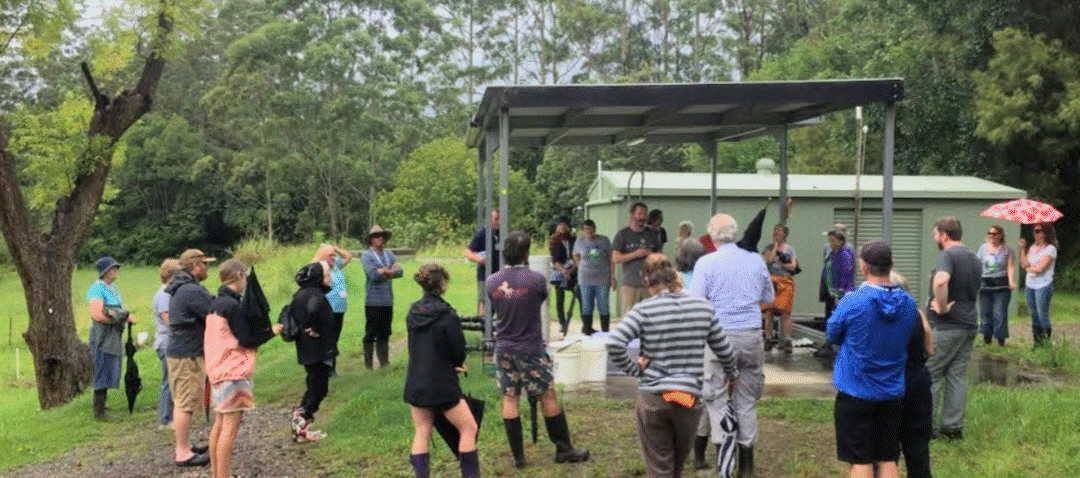
The Open Day talk and tour explains what Narara Ecovillage is all about, and demonstrates how we are activating a resilient community with ecological, social and economic potential by:
- shared Permaculture spaces
- shared community and workplaces
- building highly efficient low-carbon homes now and in the next stage
All are welcome.
- When: Sun Aug 27, 10.30am – 1pm
- Where: Narara Ecovillage Hall, 33 Gugandi Road Narara
- Cost: $15 includes talk & walking tour around village. Kids & NELN members free!
- More Details and Registration
If this is your first visit to Narara Ecovillage, you may find this interesting: the Open Day Preview introduces the ecovillage and its unfolding story.
Fri 18- Sun 20 Aug: Experiential Deep Ecology Weekend Workshop

The Rainforest Information Centre presents a weekend immersion in DEEP ECOLOGY with John Seed, Carly Walker-Smith & Allison Tsao. We will challenge the illusion that humans are separate from the rest of the natural world.
- When: 4pm Fri 18- 4pm Sun 20 August, 2023
- Where: Narara Ecovillage, 33 Gugandi Road Narara
- Cost: $150-$600 (incl all meals)
- More info & Registration here
NELN members 10% discount – when you register click on “hidden tickets” and then enter “NELN” in the code field.
‘Deep Ecology’ is a term coined by the late Arne Naess, emeritus professor of philosophy from Oslo University. According to Naess, underlying all the symptoms of the environmental crisis is the illusion of separation between human beings and the rest of the natural world. Naess claimed that we can’t think our way out of this illusion, but that we need “community therapies” to heal our relations with Earth.
25% of the proceeds to the Rainforest Information Centre
Sat 26 Aug: Festival of Health & Beauty at Narara Ecovillage

Hear and experience contributions from 4 professionals – each with their views and ideas for working on the inside of our body, to be reflected on the outside: Suzie Brown (Mindfulness and Insight Meditation), Adrian Adams (Naturopathy), Carly Walker-Smith (Ecotherapy, Nutritional Medicine), Maria Mackey (Wellness Medicine). Experience Forest Bathing
- When: Saturday 26 August, 8.30am-5pm
- Where: Where: Narara Ecovillage Hall, 33 Gugandi Road Narara
- Cost: $50
- More info & Registration here
All Welcome. Limited numbers, so don’t miss out on this exceptional event
Sat 9 – Sun 10 Sep: Food for the Earth – life for the soil

Attend for one or both days
Join us to learn about biodynamic agriculture at these hands-on workshops led by Dianne Watkin from Biodynamics Sydney.
We will prepare a garden bed, build a compost pile, and learn about the principles of biodynamics.
- When: Sat 9 Sept 9am– Sun 10 Sept 5.30pm
- Where: Narara Ecovillage
- Cost: $189 or $170 for Narara & NELN members. $100 for 1 day. Some part-scholarships available.
- Bring: Please bring your own lunch. You may buy lunch from the coffee cart on Saturday, or Ezy DeanZ near the village on either day.
- More info & Registration here
Biodynamics is rooted in the work of philosopher and scientist Dr. Rudolf Steiner, whose 1924 lectures to farmers opened a way to integrate scientific understanding with a recognition of spirit in nature.
Fri 15 Sep: Explore time and space on a labyrinth
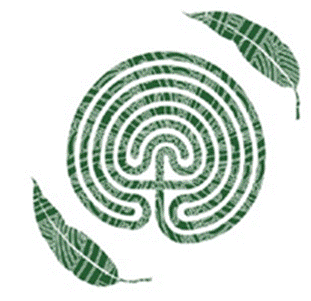
Network news readers and their friends are invited to experience the power of a labyrinth to take us into different realms of space and time. Labyrinths have their own energy and when we walk them meditatively we can leave linear time behind, and taste continuity and connection.
This day-long workshop is a day of some talk, but mostly mindfulness and labyrinth meditation, reflection, and a good introduction to labyrinths. It might even revolutionise your ideas about time and space!
- When: Fri 15 Sept, 10am-4pm
- Where: Narara Ecovillage Hall, 33 Gugandi Rd Narara
- Cost: $80 BYO lunch for NEV/NELN; $120 lunch included for everyone else
- More info & Registration: Register here or for info, email Heather Middleton orlandosage@gmail.com
Thu 21 Sep: StoryVillage – Storytelling Cafe on International Hobbit Day
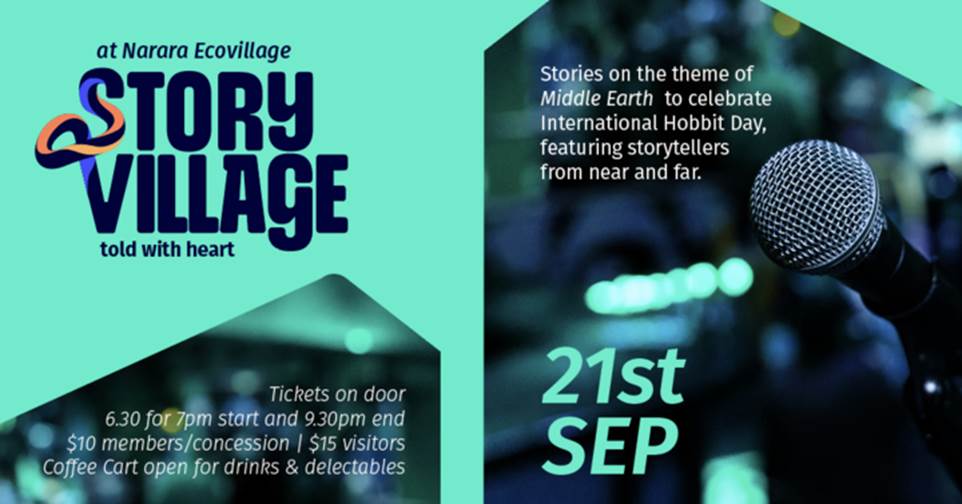
Real stories told with heart, on the theme Middle Earth — to celebrate International Hobbit Day, featuring storytellers from near and far.
- When: Thursday 3rd Sep, 6.30 entry; stories 7- 9pm
- Where: Narara Ecovillage Hall, 33 Gugandi Road Narara
- Cost: $10 village members/concession or $15 full
- Registration: Just turn up
- More info: Coffee Cart open for delectables and drinks
Narara Ecovillage Noticeboard
- Contact: please email noticeboard@nararaecovillage.com
Narara Ecovillage Public Events Calendar
Other Opportunities
Electric car share now available at Narara Ecovillage

A shiny white Hyundai Kona Highlander Extended Range is now based at Narara Ecovillage and available for rental for anyone to book. It has a range of 450+km when full.
Cost:
- $95 per 24 hours including 100km, and 35c/km over 100km.
- There is currently a reduced charge for shorter periods.
- There is also a 10% discount on bookings of 7 days or more.
Details and bookings: https://drive-mate.com.au
Type 2250 in the location field and select Bucketty NSW
House-sitting request, Central Coast
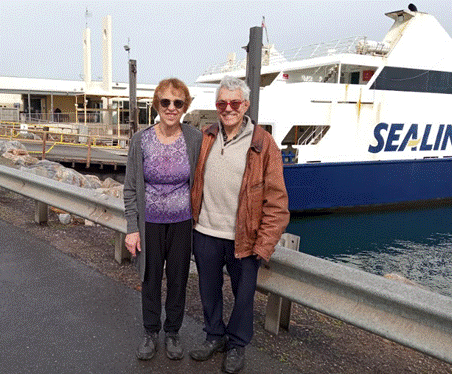
Jonathan and Sue Black will be building one of the new homes at the Ecovillage in 2024, and are moving from Melbourne in November.
They are looking for somewhere to house-sit, either at Narara Ecovillage or on the Central Coast within about an hour’s drive of Narara.
- They have experience of looking after chickens and fish!
- Call 0449 758 715 or Jonathan@kerenblack.com
Accommodation at Narara Ecovillage – Paperbark House is open for business!
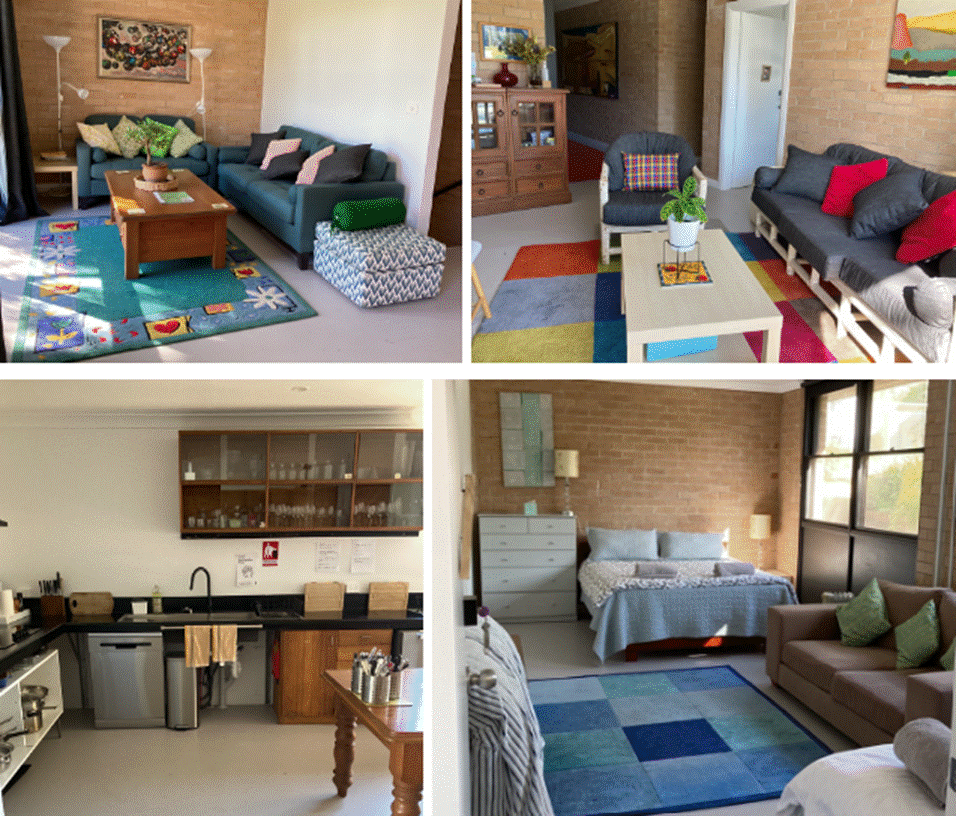
-Joanne Hunt (Manager)
We love having visitors at Narara Ecovillage and now we can welcome you with comfortable accommodation right in the heart of the village. Continue …
It’s been a long time coming but at last a portion of the Administration Building, inherited from the Horticultural Research Station, has seen a major upgrade into an accommodation facility. It has been open for a while, but we recently held an Evening of Celebration to mark Paperbark House’s official opening.
Paperbark House now occupies a space once referred to as ‘The West Wing’. Situated in the heart of the village, there are five large rooms, each containing enough beds for 3 – 4 people. Children under 5 stay free of charge. At the end of the hallway each room has its own bathroom, one of which is fully accessible.
There’s a huge and well appointed shared kitchen for self catering, a spacious lounge area and a lovely north facing deck.The community laundry is also attached. And the power for this comes from our community smart grid, so you know you won’t be burning coal to wash your clothes!
The Coffee Cart is situated close by and offers healthy meals, treats and fabulous coffee Tue-Sat mornings. If you are coming to Narara Ecovillage for an event, you are also close to our Village Hall. In addition, the Village Pantry is open at times to help you with your shopping needs.
Bookings can be made online at Paperbarkhouse.com.au or for special requests, group discounts and longer stays please email stay@nararaecovillage.com.
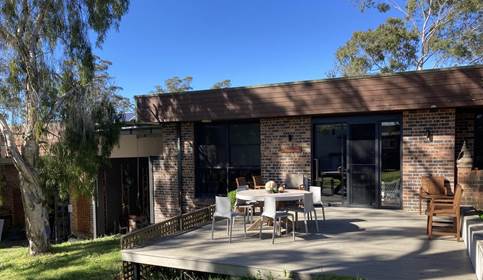
Contact the Network News Editors neln.network.news@gmail.com


